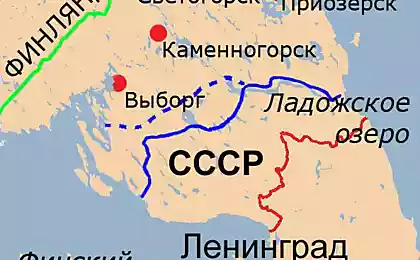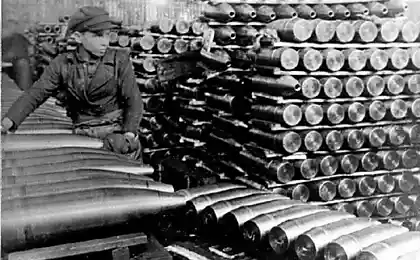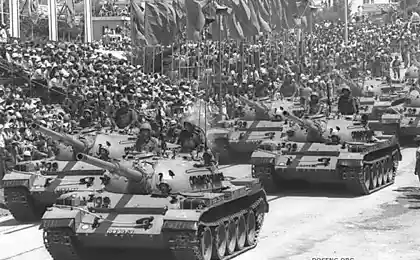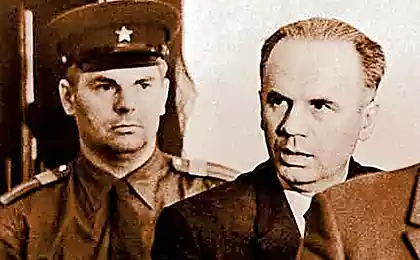3054
Sovetskaya-Finnish War
Subject Soviet-Finnish war of 1939-1940 has now become quite a popular topic of discussion in Russia. Many call it a shame the Soviet army - 105 days from 30 November 1939 to 13 March 1940, the parties had lost only killed more than 150 thousand. Man. Russians won the war, and 430,000 Finns were forced to leave their homes and return to their homeland.
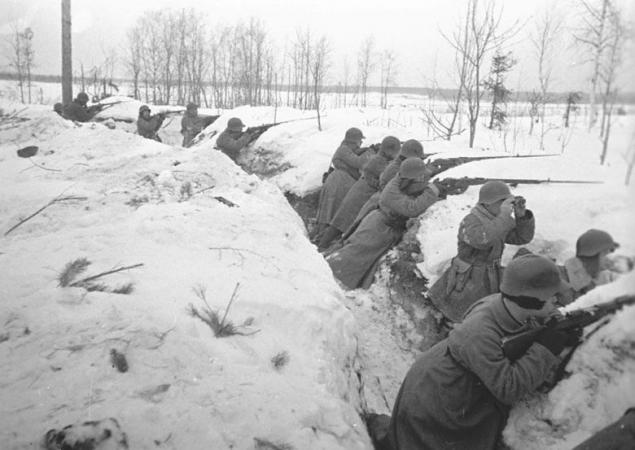
In Soviet textbooks assured us: the beginning of the armed conflict, "the Finnish military." November 26 near the village of Mainila there was shelling of the Soviet troops, who were at the Finnish border, in which four soldiers were killed and 10 wounded.
Finns have proposed the creation of a joint commission to investigate the incident, from which the Soviets refused and said it no longer considers itself bound by the Soviet-Finnish treaty of non-aggression. It was the shelling of a hoax?
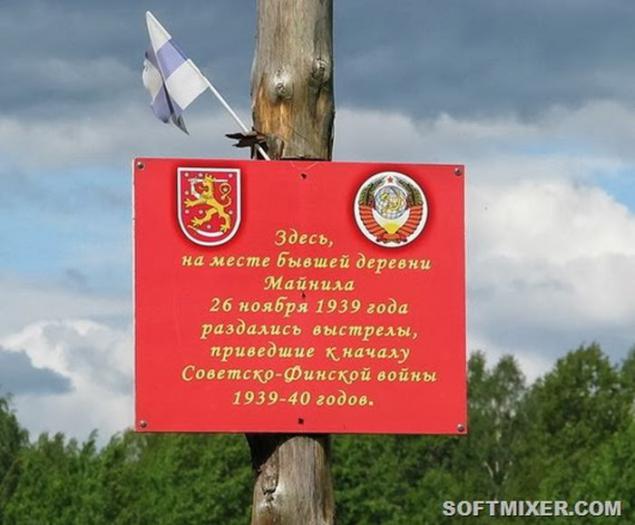
"I have read the documents until recently classified, - says military historian Miroslav Morozov. - In the divisional war diary page with entries about shelling are much more recent origin.
Report to the division headquarters there, families of victims are not indicated in what hospital sent the wounded - it is unknown ... As you can see, while the Soviet leadership not to take care of credibility reason for going to war ».
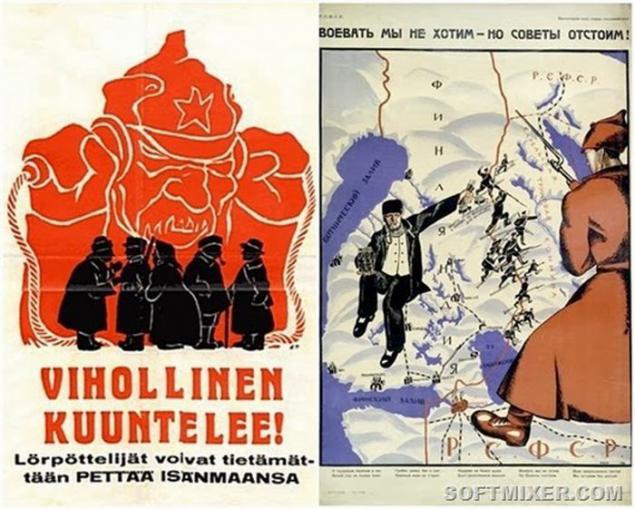
Since the declaration of independence of Finland in December 1917, with the USSR constantly had territorial claims. But they are increasingly becoming the subject of negotiations. The situation changed in the late 30s, when it became clear that soon will begin the second world war. USSR demanded that the Finnish non-participation in the war against the Soviet Union, permits the construction of Soviet military bases on the Finnish territory. Finland hesitated and pulled time.
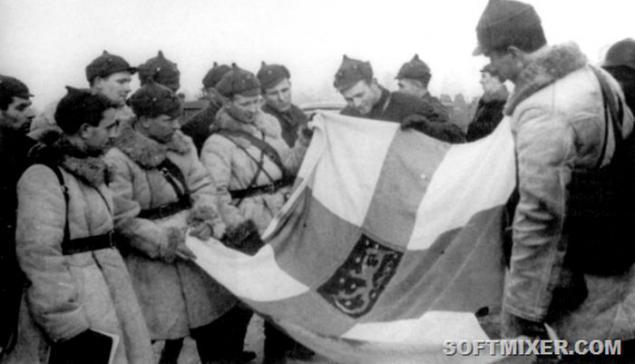
The situation worsened with the signing of the Molotov-Ribbentrop Pact, by which Finland belonged to the Soviet sphere of interest. The Soviet Union began to insist on their terms, while offering certain territorial concessions in Karelia. But the Finnish government rejected all the offers. Then, on Nov. 30, 1939 began the invasion of Soviet troops on the territory of Finland.
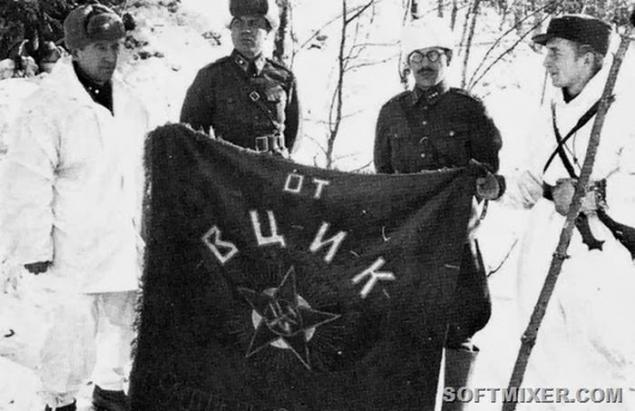
In January, hit frost to -30 degrees. Surrounded by Finnish soldiers were forbidden to leave the enemy heavy weapons and equipment. However, seeing the inevitability of the death of the division, Vinogradov gave the order to leave the environment.
Of the nearly 7,500 people came to their 1500 division commander, regimental commissar and chief of staff were shot. And it turned out in the same conditions as the 18th Infantry Division remained on the ground and completely destroyed the north of Lake Ladoga.

But the heaviest losses of Soviet troops suffered in the fighting on the main line - the Karelian Isthmus. It covers the 140-kilometer-long defensive Mannerheim Line on the main defensive belt consisted of 210 long-term and 546 tree-earth emplacements. To break through it and grab the city of Vyborg was only during the third assault, which began Feb. 11, 1940
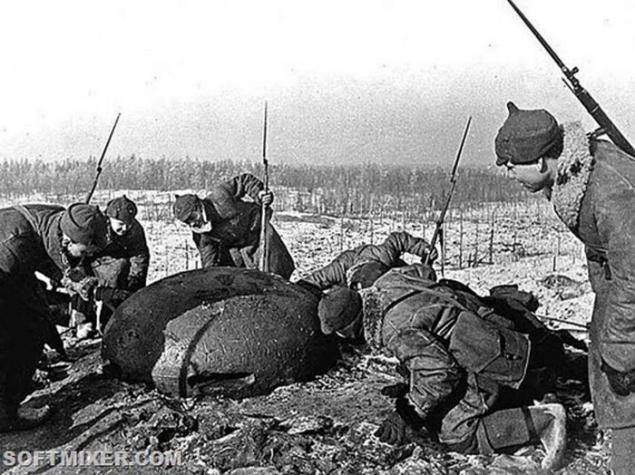
The Finnish government, seeing no hope left, went into the negotiations and 12 March was the peace treaty. The fighting ended. Having a dubious victory over Finland, the Red Army began to prepare for war with the much larger predator - Nazi Germany. The preparation of the history has released 1 year, 3 months and 10 days.

As a result of the war with the Finnish side lost 26 thousand soldiers from the Soviet - 126 thousand. USSR was new territory and pushed the border from Leningrad. Finland, in the future, was on the side of Germany. And the Soviet Union was expelled them to the League of Nations.
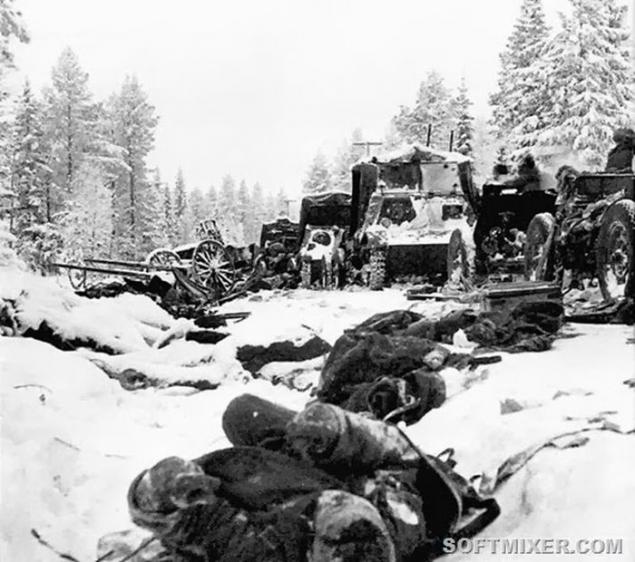
Some facts from the history of the Soviet-Finnish War
1. Soviet-Finnish war of 1939/1940's was not the first armed conflict between the two countries. In 1918-1920, and again in 1921-1922 were the so-called first and second Russo-Finnish War, in which the Finnish authorities, who dreamed of a "Greater Finland", tried to seize the territory of East Karelia.
Themselves were a continuation of the war raging in Finland in 1918-1919 bloody civil war ended with the victory of Finnish "white" on the Finnish "Reds." As a result of the wars of the RSFSR retained control of the eastern Karelia, Finland gave Polar Pechenga, as well as the western part of the peninsula and most of the Fishermen Peninsula Middle.
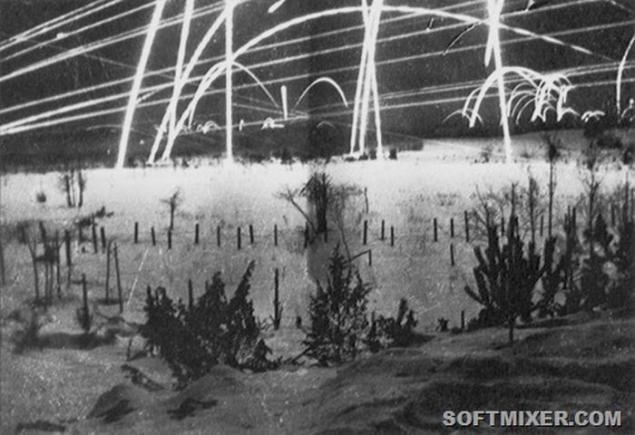
2. At the end of the wars of the 1920s the relations between the USSR and Finland were not friendly, but did not reach the open confrontation. In 1932, the Soviet Union and Finland signed an agreement on non-aggression, which was later extended to 1945, but the fall of 1939, the Soviet Union severed unilaterally.
3. In 1938-1939 the Soviet government was secretly negotiating with the Finnish side of the exchange of territories. In the context of the impending World War, the Soviet Union intended to push the state border from Leningrad, as it is just 18 kilometers from the city. In return, Finland proposed the territory in Eastern Karelia, much larger in size. The negotiations, however, were unsuccessful.
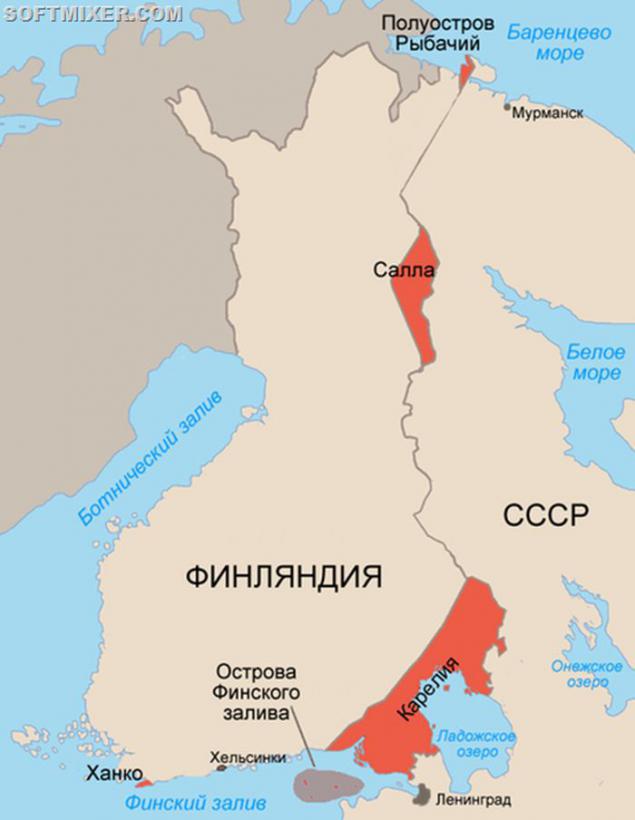
4. The immediate reason for the war was the so-called "shelling of mainila": November 26, 1939 section of the border near the village of Mainila group of Soviet soldiers had fired artillery. It has been seven gunfire, leaving three privates were killed and one junior commander, injuring seven ordinary and two of the commanders.
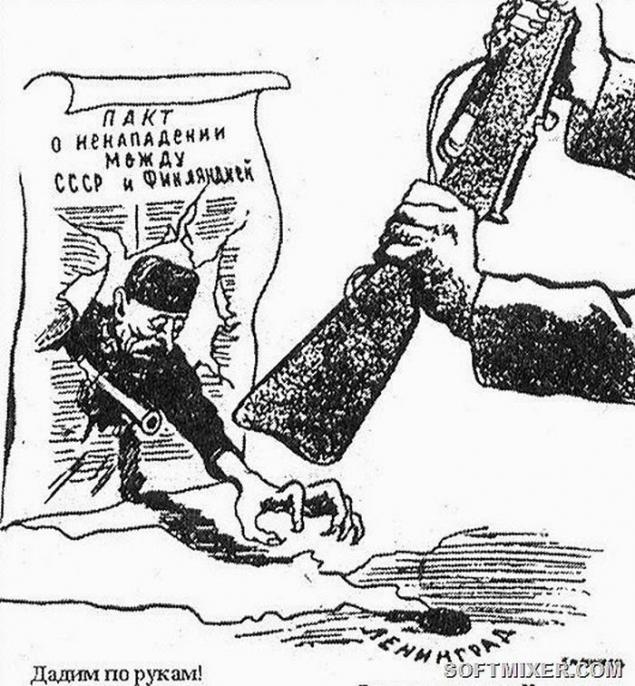
Modern historians are still arguing about whether the shelling in Maynile provocation of the Soviet Union or not. Anyway, two days later, the Soviet Union denounced the non-aggression pact, November 30 began fighting against Finland.
5. December 1, 1939 the Soviet Union announced the establishment in the village Terijoki alternative "people's government" led by the Finnish Communist Otto Kuusinen. The next day, the Soviet Union signed a treaty of mutual assistance and friendship with the Government of Kuusinen, is recognized as the only legitimate authority in Finland.
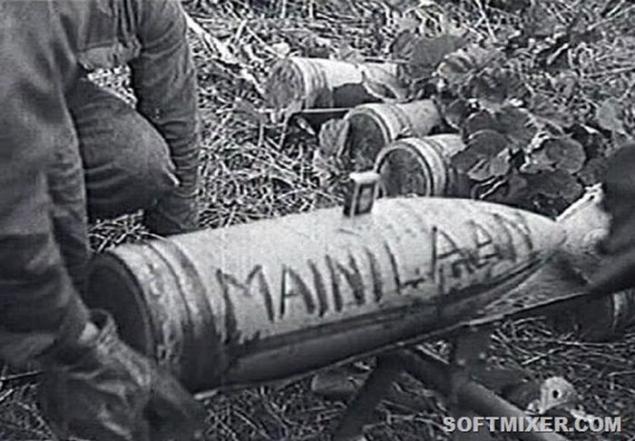
At the same time there was a process of formation of the Karelian Finns and Finnish People's Army. However, by the end of January 1940 the position of the Soviet Union has been revised - the government Kuusinen remembered no more, and all talks were held with the authorities in Helsinki.
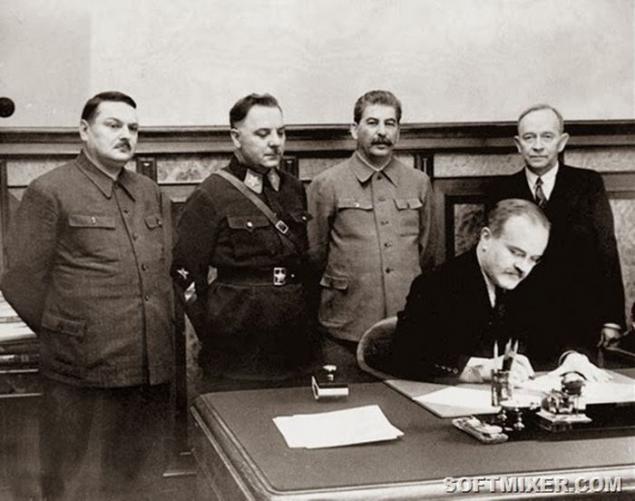
6. The main obstacle for the Soviet offensive was "Mannerheim Line" - named after the commander of the Finnish defense line and politics between the Gulf of Finland and Lake Ladoga, which consists of multi-level, equipped with heavy weapons concrete fortifications.
Initially did not have funds for the destruction of such a line of defense, Soviet troops suffered heavy losses during the many frontal attacks on strengthening.

7. Finland at the same time provide military assistance to both Nazi Germany and its opponents - England and France. But if Germany was limited unofficial military supplies, the Anglo-French forces considered plans for a military intervention against the Soviet Union. However, these plans have not been implemented because of fears that the Soviet Union in such a case may take part in the Second World War on the side of Nazi Germany.
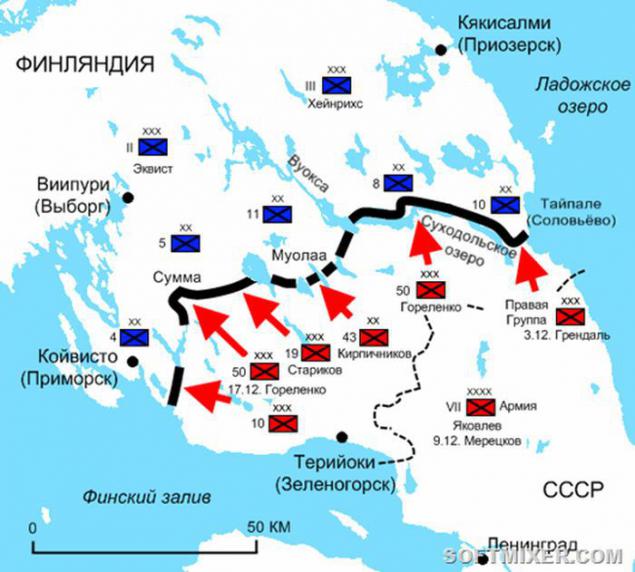
8. By early March 1940, Soviet troops managed to break through the "Mannerheim Line" that posed a threat to the complete defeat of Finland. In these circumstances, and not waiting for the Anglo-French intervention against the Soviet Union, the Finnish government has gone to negotiate peace with the Soviet Union. The peace treaty was signed in Moscow on March 12, 1940, and the fighting ended March 13 capture of Vyborg by the Red Army.
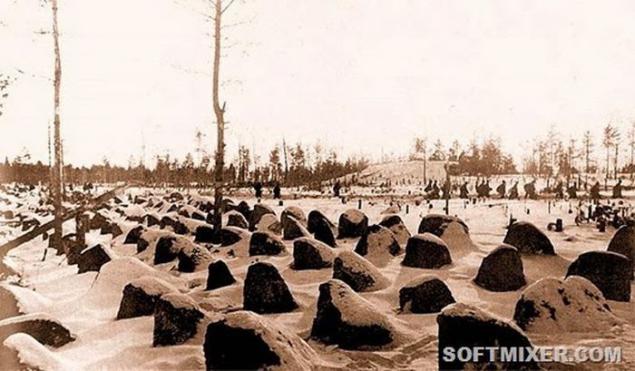
9. In accordance with the Moscow Treaty, the Soviet-Finnish border was pushed from Leningrad from 18 to 150 km. According to many historians, this fact has largely helped the city avoid capture by the Nazis during World War II.
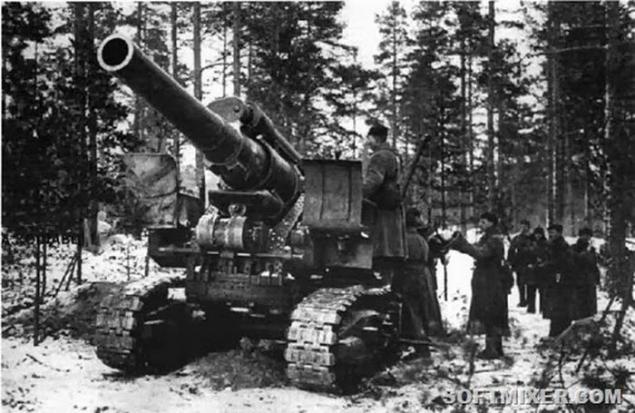
All in all territorial acquisitions of the USSR at the end of the Russo-Finnish War totaled 40 thousand sq.km. Data on the human cost of the parties to the conflict and to this day remains controversial: the Red Army lost killed and missing from 125 to 170 thousand people, the Finnish army - from 26 to 95 thousand people.

10. The well-known Soviet poet Alexander Tvardovsky in 1943 wrote a poem "Two lines", which became perhaps the most striking artistic reminder of Soviet-Finnish War:
From the notebook shabby books
Two lines of fighters kid,
What I was in the fortieth year
Killed in Finland on the ice.
Lying somehow clumsily
Childish little body.
Overcoat to ice cold pressed,
Far cap came off.
It seemed as if the boy was not lying,
And still ran ran
Yes, the ice held the floor for ...
Among the big war cruel,
Why - I'll never know,
I feel sorry for the fate of the distant,
As if dead, lonely,
As if that I lie,
The frozen, small, dead
In that war neznamenitoy,
Forgotten, a little lie.
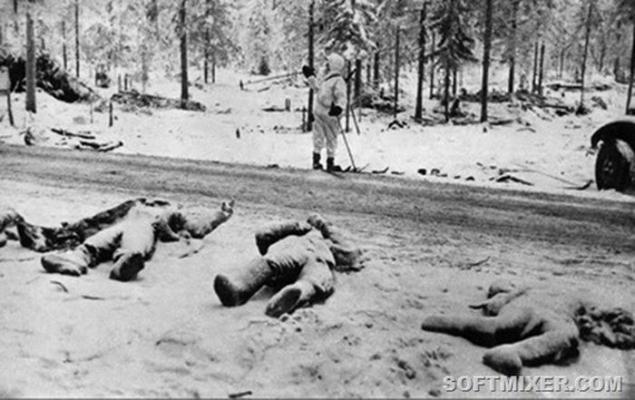
Photos "neznamenitoy" War
Hero of the Soviet Union Lieutenant MI Sipovich captain Korovin on the captured Finnish reinforced-concrete pillbox.

Soviet soldiers inspect captured Supervisory cap Finnish bunker.
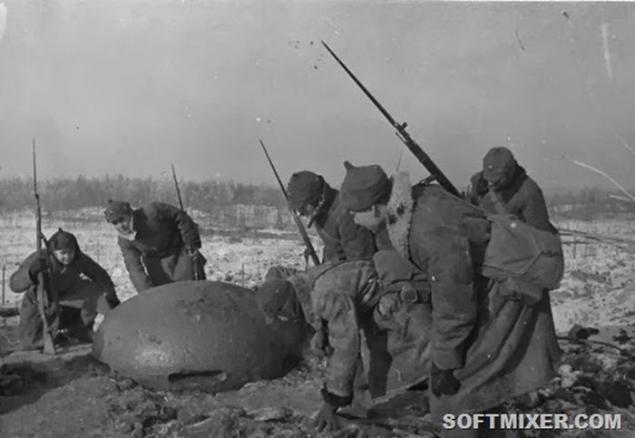
Soviet soldiers are preparing to conduct Maxim machine gun anti-aircraft fire.
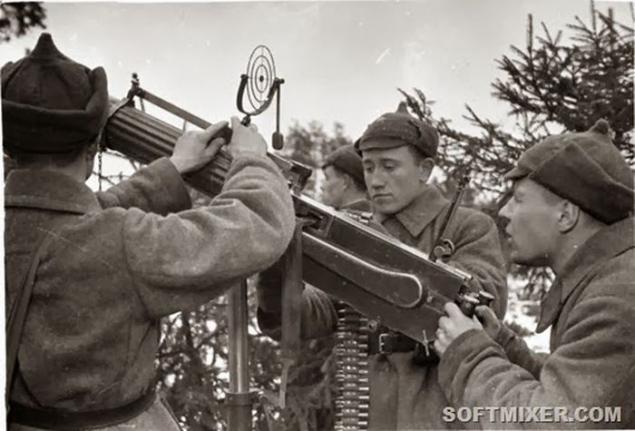
Burning after the bombing of a house in Turku, Finland.
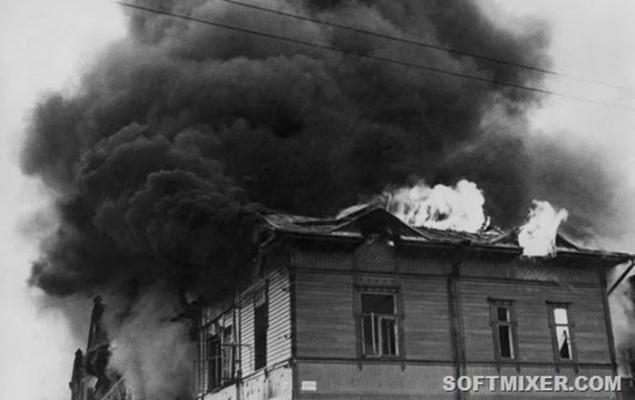
Soviet sentry near the Quad Soviet anti-aircraft machine gun mount on the base of the machine gun "Maxim».
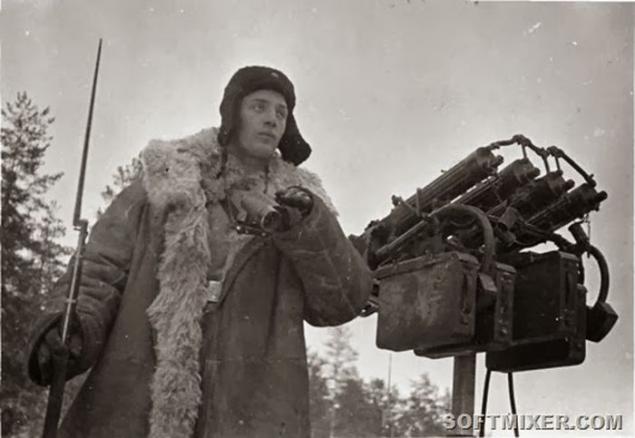
Soviet soldiers dug Finnish border post near the frontier Mainila.
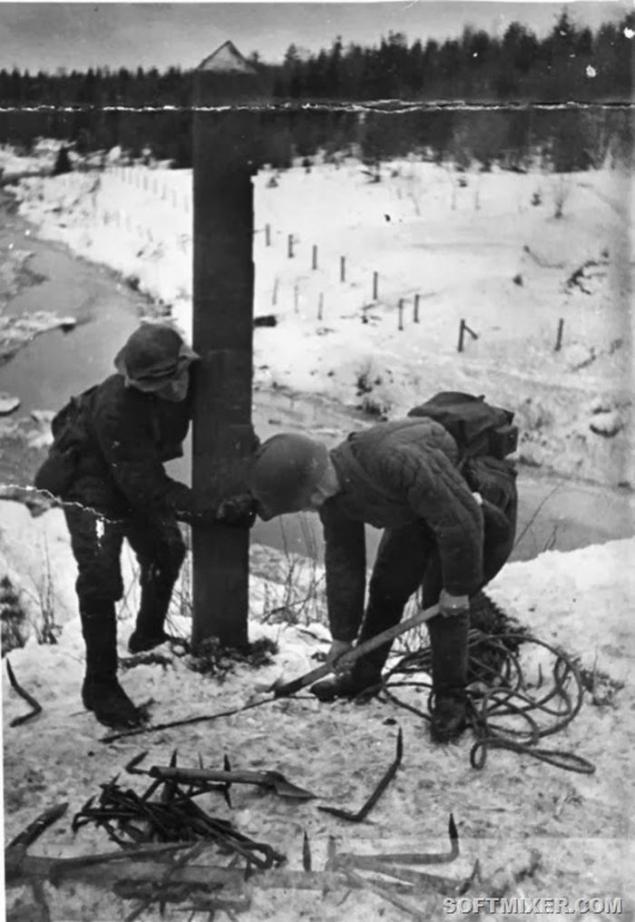
Soviet military breeders separate battalion of communication with connected dogs.

Soviet border guards inspect captured weapons Finnish.
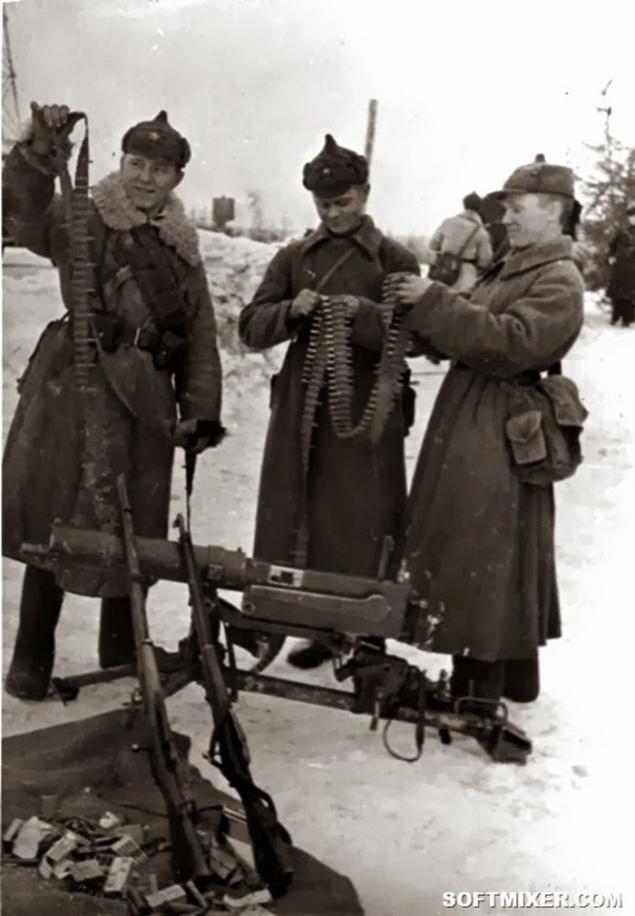
Finnish soldier next to a Soviet fighter shot down I-15 bis.

Build soldiers and commanders of the 123rd Infantry Division on the march after fighting on the Karelian Isthmus.
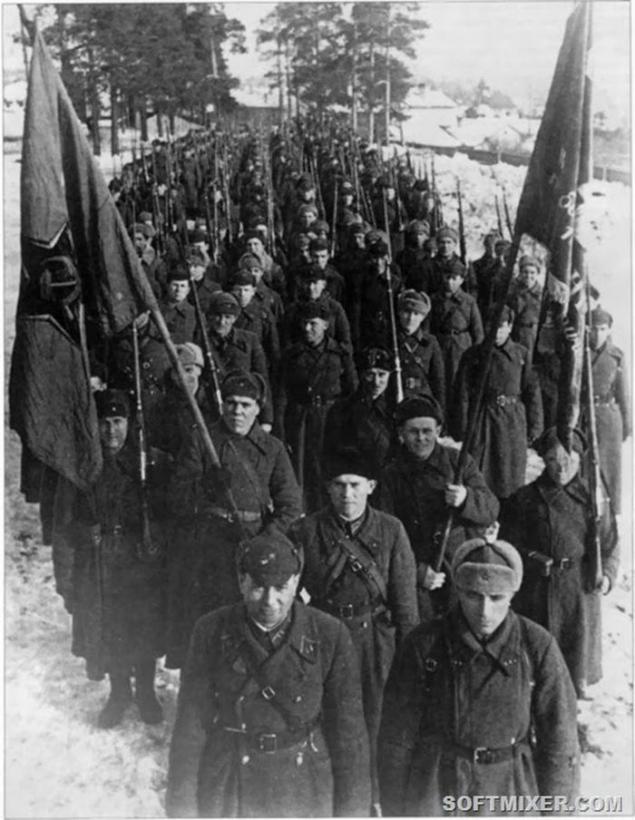
Finnish soldiers in the trenches near Suomussalmi during the Winter War.

Red Army prisoners captured by the Finns in the winter 1940.
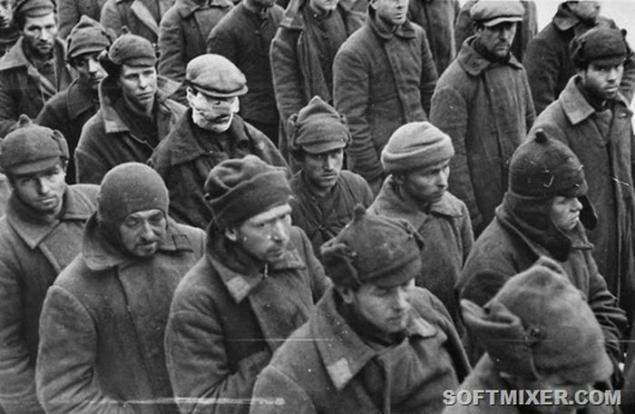
Finnish soldiers are trying to spread out in the forest, seeing the approach of Soviet aircraft.

Frozen Red Army 44th Infantry Division.
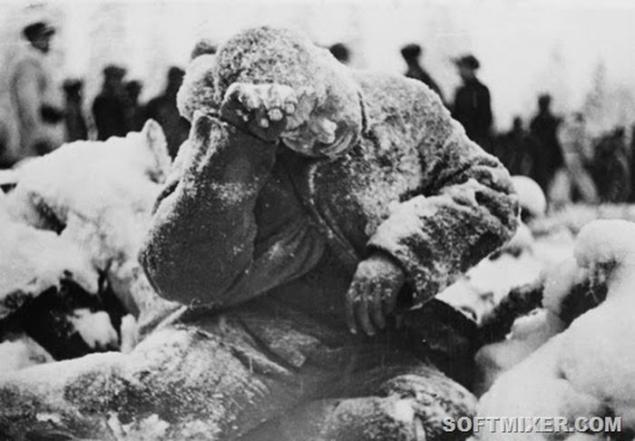
Frozen Red Army soldiers in the trenches of the 44th Infantry Division.
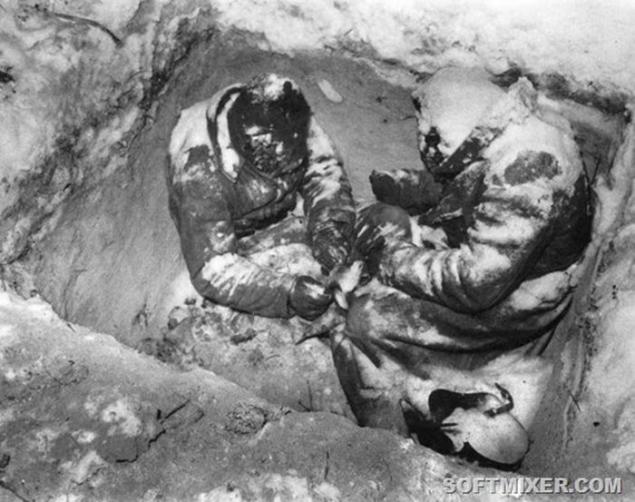
Soviet wounded man lying on the table for a cast made of improvised means.
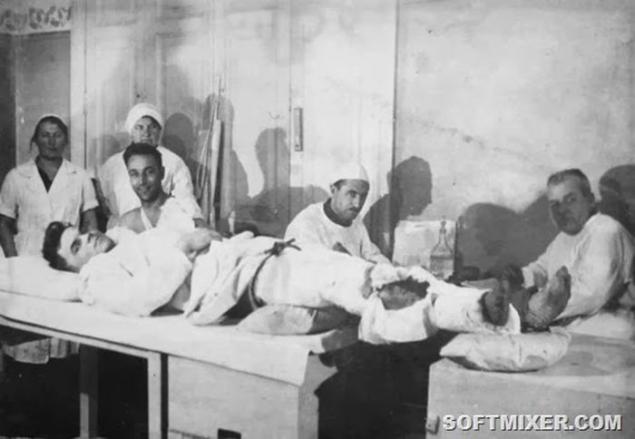
Park "Three corners" in Helsinki with open slits dug to shelter the population in the event of an air raid.

Blood transfusions prior to surgery in a Soviet military hospital.

Finnish women at the factory sew winter camouflage coveralls /
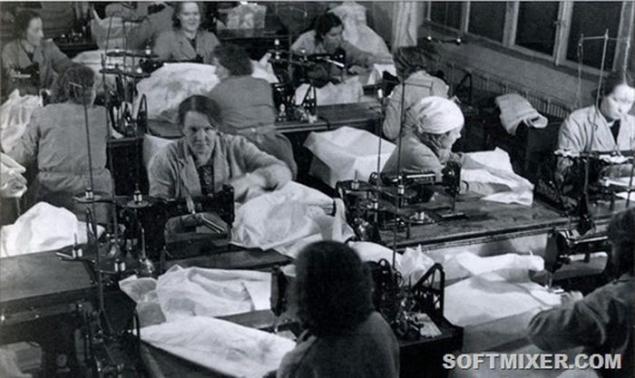
Finnish soldier misses the broken Soviet tank column /
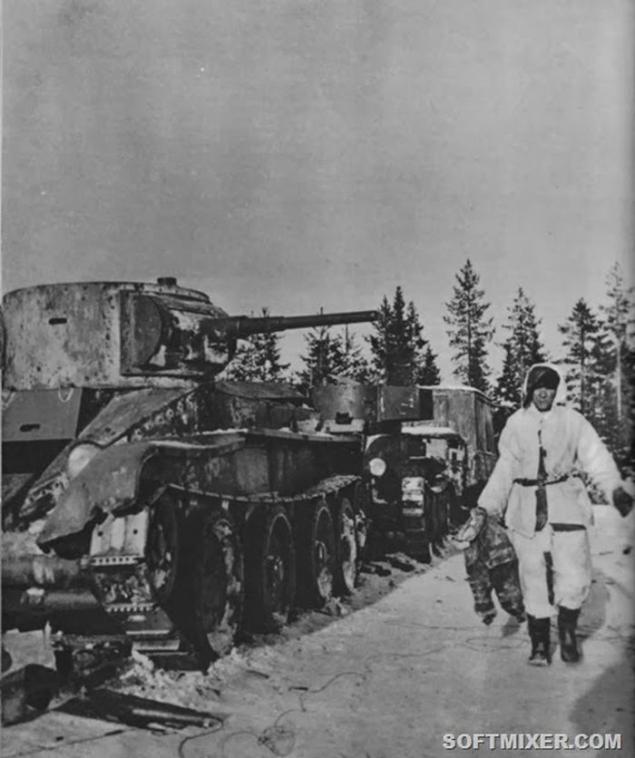
Finnish soldiers firing from a machine gun Lahti Saloranta-M-26 /
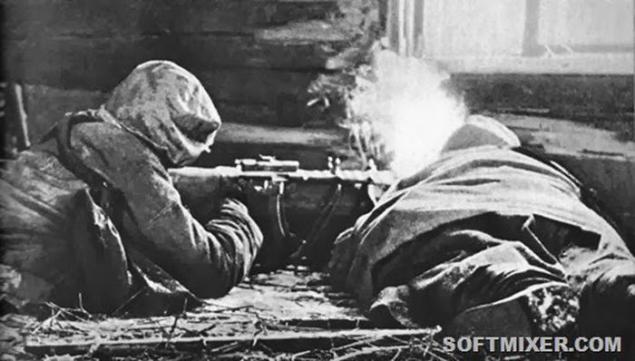
Residents of Leningrad welcome tank 20 Tank Brigade tanks T-28, returning from the Karelian Isthmus /
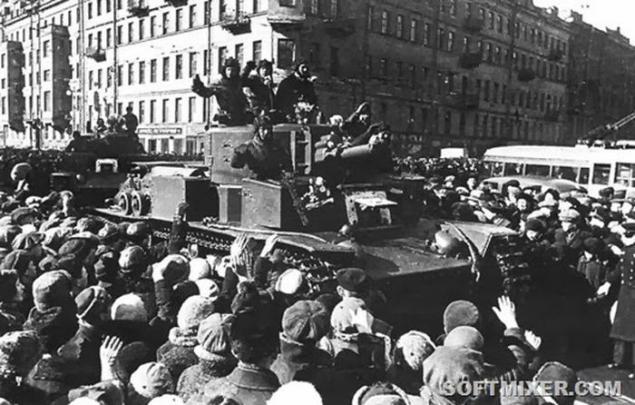
Finnish soldiers with a machine gun Lahti Saloranta-M-26 /

Finnish soldiers with a machine gun "Maxim" M / 32-33 in the forest.

Finnish anti-aircraft machine gun calculation "Maxim».
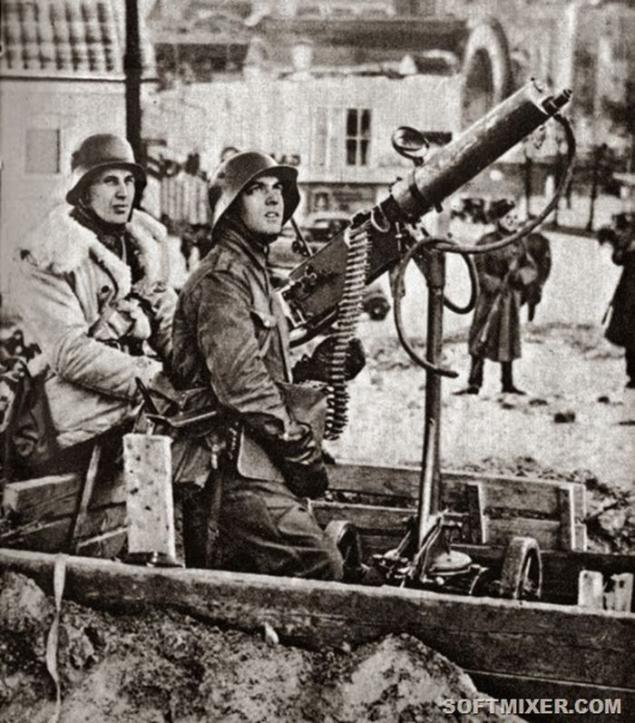
Finnish tanks "Vickers", lined near the station Perot.
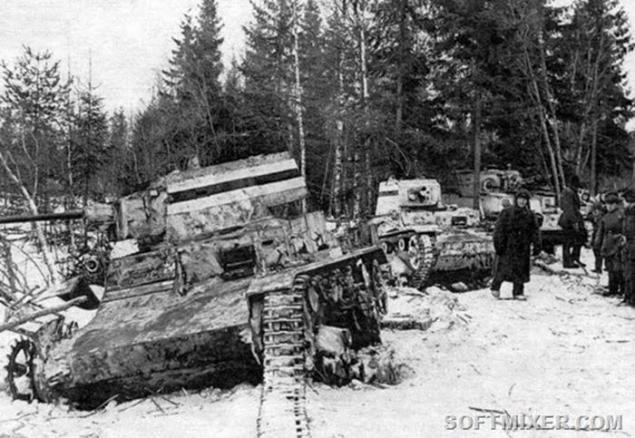
Finnish soldiers in 152-mm cannon Kane.
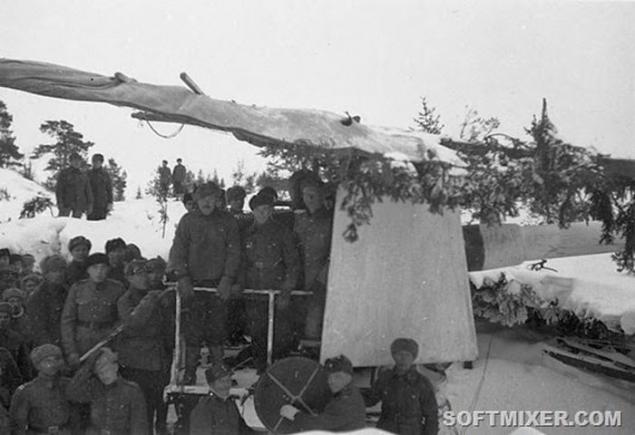
Finnish civilians who fled their homes during the Winter War.

Broken Column Soviet 44th Division.
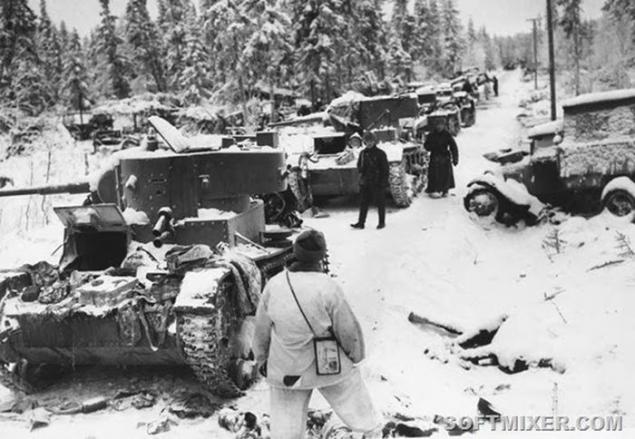
Soviet bombers SB-2 over Helsinki.

Three Finnish skiers on the march.

Two Soviet soldier with a machine gun "Maxim" in the woods on the Mannerheim Line.
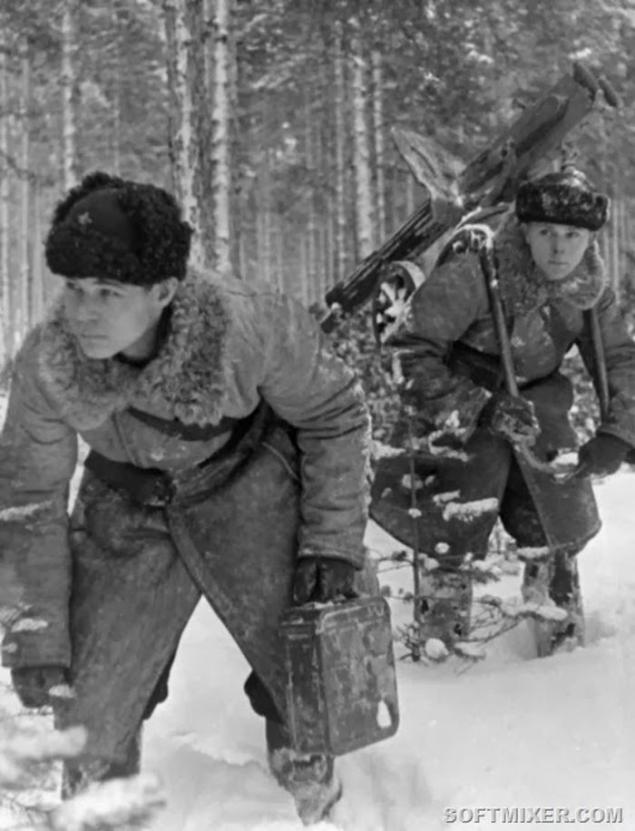
The burning house in the Finnish city of Vaasa (Vaasa) after a raid by the Soviet Air Force.

View of the streets of Helsinki after a raid by the Soviet Air Force.

House in the center of Helsinki, damaged after the attack of Soviet aviation.
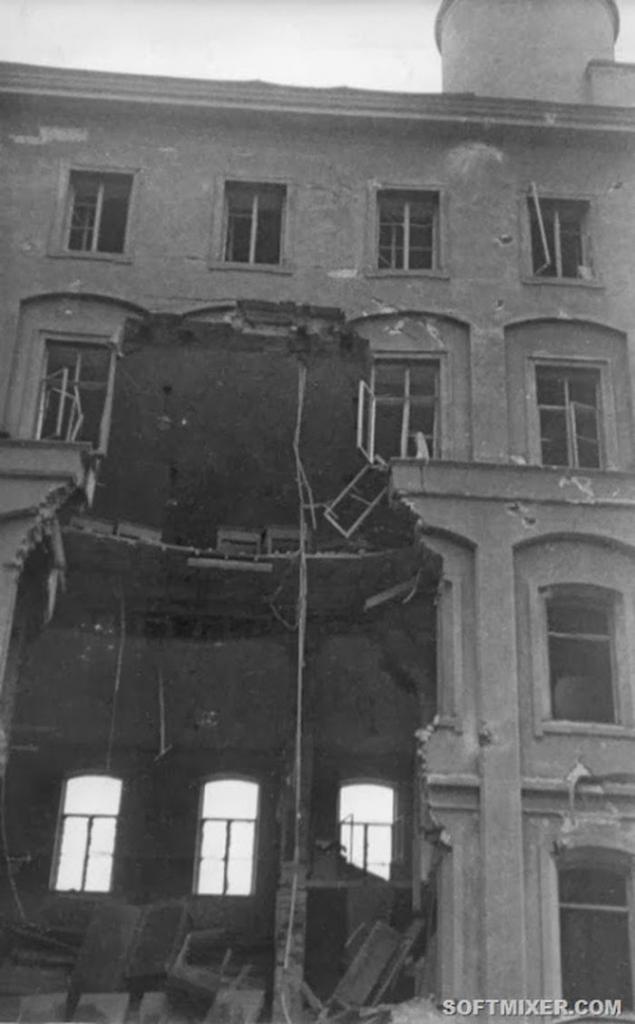
Finnish soldiers raise the frozen body of a Soviet officer.
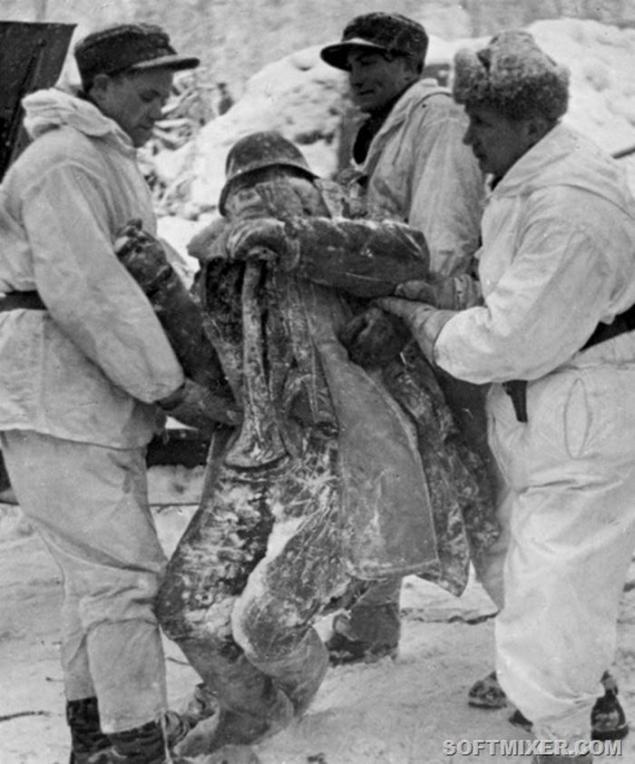
Finnish soldier looks at changing the clothes Red Army prisoners.

Soviet prisoners captured by the Finns sitting on a box.
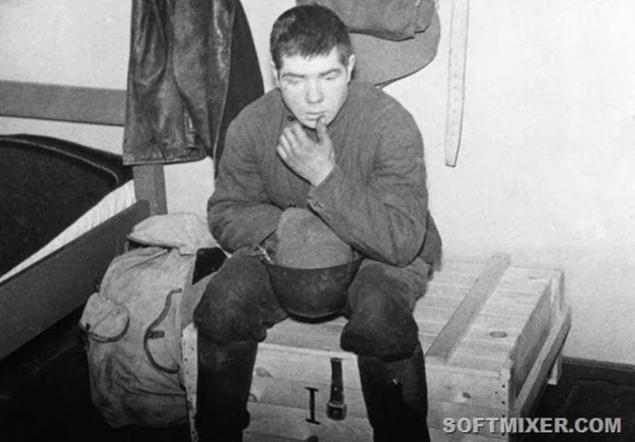
Red Army prisoners enter the house under guard of Finnish soldiers.
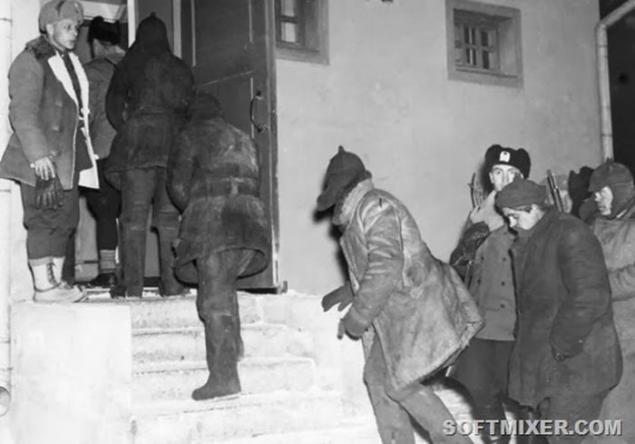
Finnish soldiers carry a wounded comrade on a dog sled.
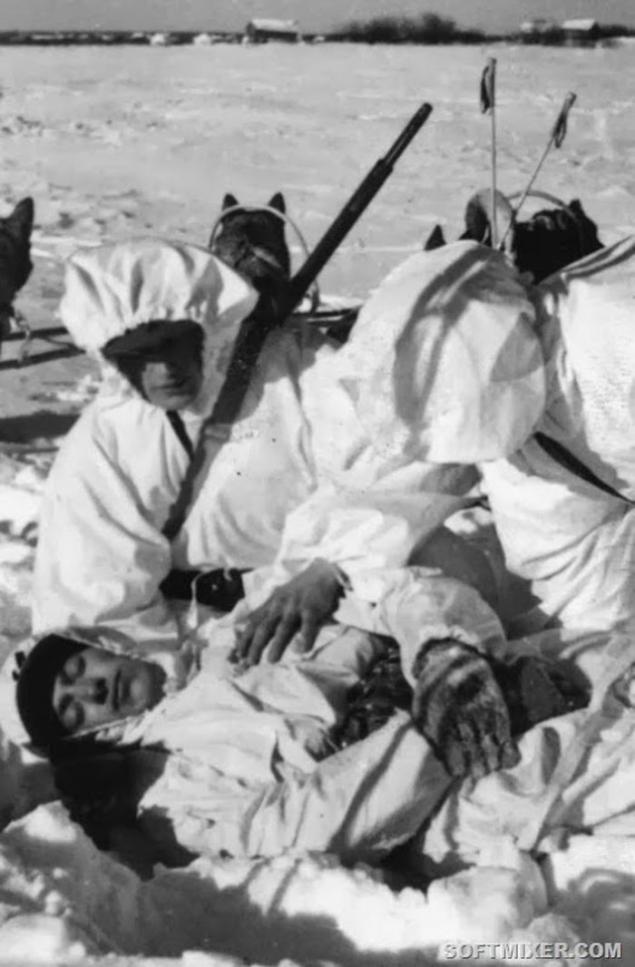
Finnish nurses carry stretchers with the wounded at a field hospital tents.
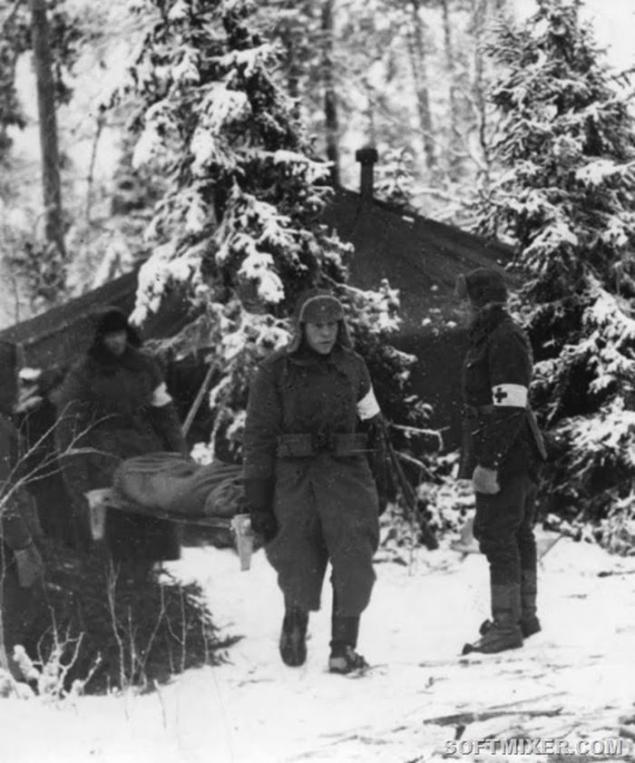
Finnish medical stretchers loaded with the wounded in hospital bus production «AUTOKORI OY».
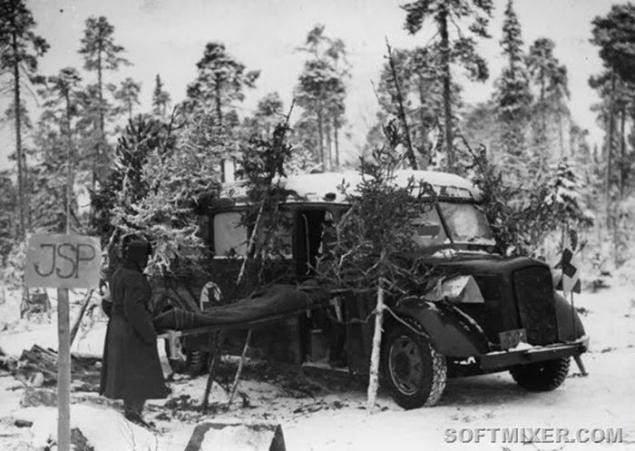
Finnish skiers with deer and drags to a halt during the retreat.
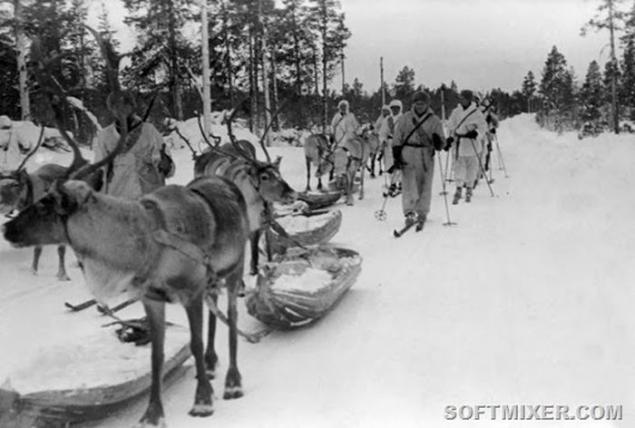
Finnish soldiers dismantled the captured Soviet military equipment.
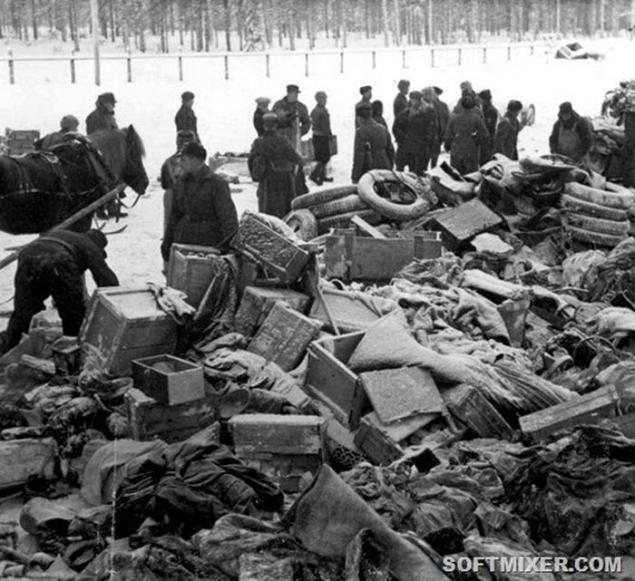
Sandbags covering the windows at home on the street Sofiankatu in Helsinki.

T-28, the 20th Heavy Tank Brigade, before going on a combat operation.

Soviet tank T-28, lined on the Karelian Isthmus near the height of 65, 5.

Finnish tanker near the captured Soviet T-28.
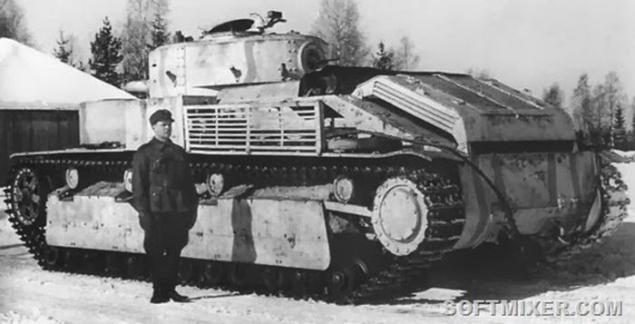
Residents of Leningrad welcome tankers 20th Heavy Tank Brigade.
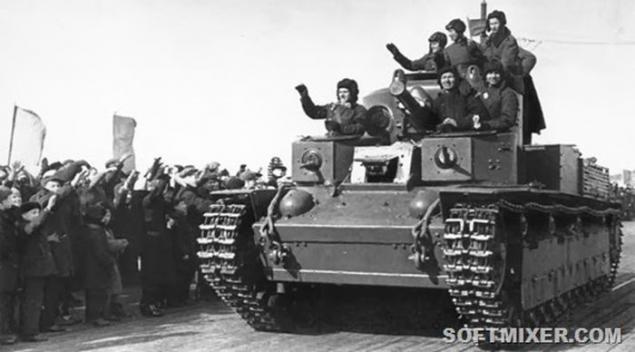
Soviet officers on a background of Vyborg Castle.

Finnish air defense soldiers looking at the sky through a rangefinder.

Finnish ski battalion with deer and drags.
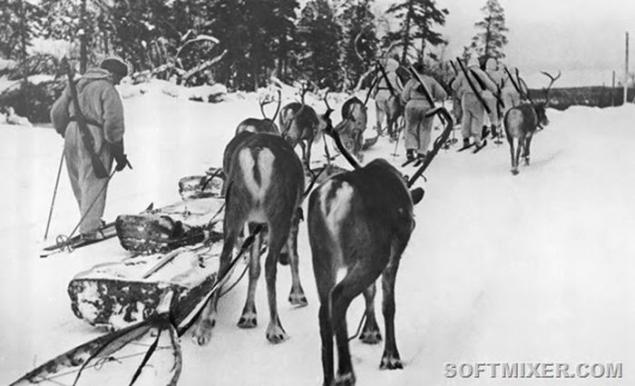
Swedish volunteer in the position during the Russo-Finnish War.
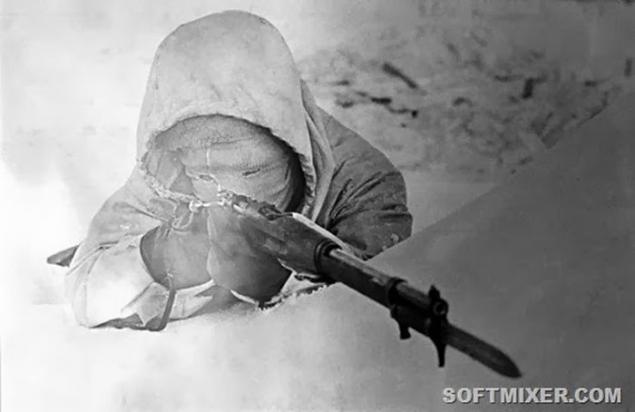
Calculation of the Soviet 122 mm howitzer at the position during the Winter War.
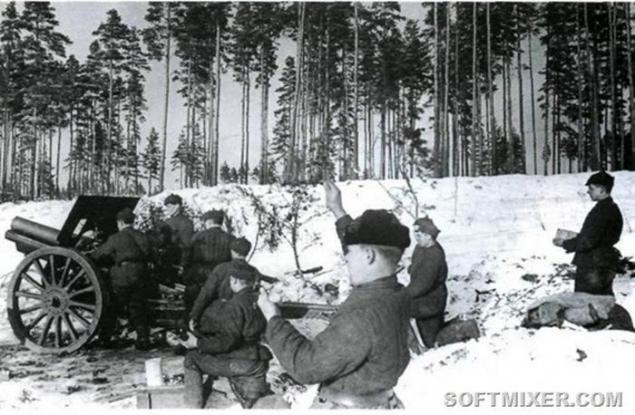
The orderly on a motorcycle passes the message to the crew of the Soviet armored car BA-10.
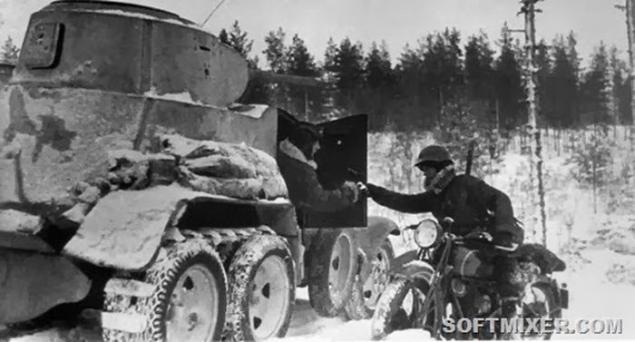
The pilots Heroes of the Soviet Union - Ivan Pyatyhin, Alexander and Alexander Flying Kostylev.
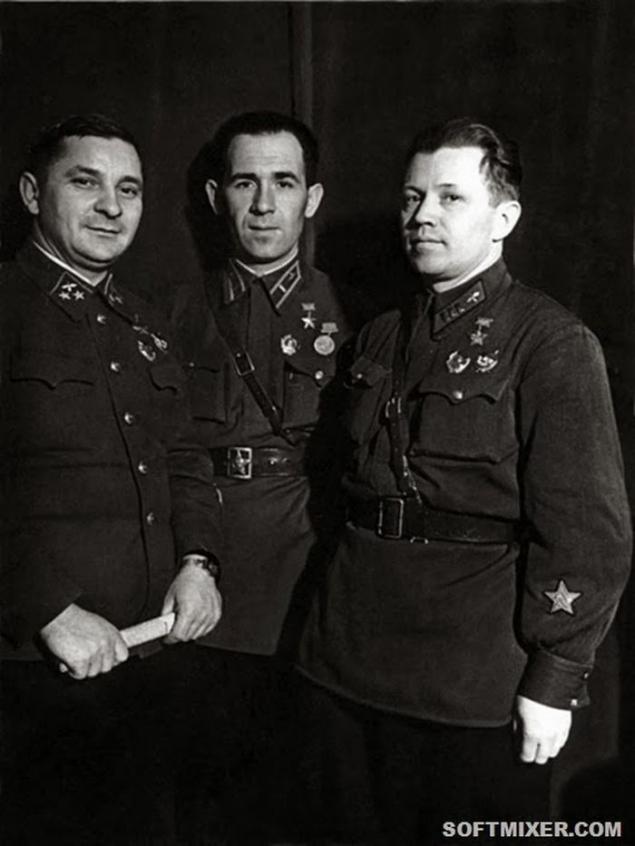
Finnish propaganda times Sovetskaya-Finnish War
Promised a carefree life, surrendered to the Red Army prisoners, Finnish propaganda: bread and butter, cigars, vodka and dancing to the accordion. For the weapons brought with them generously paid, reservation, promised to pay: his revolver - $ 100 for the gun - 1,500 rubles, and for the gun as much - 10,000 rubles.
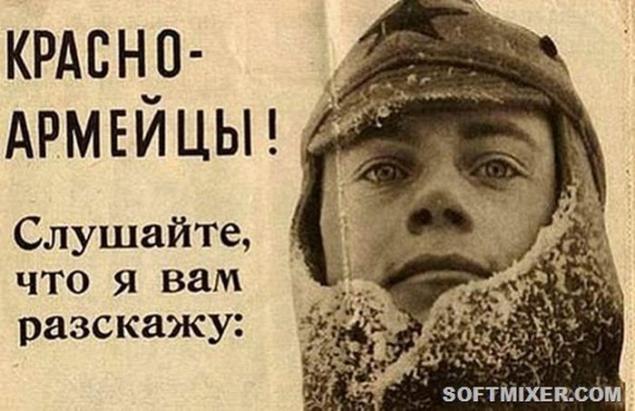
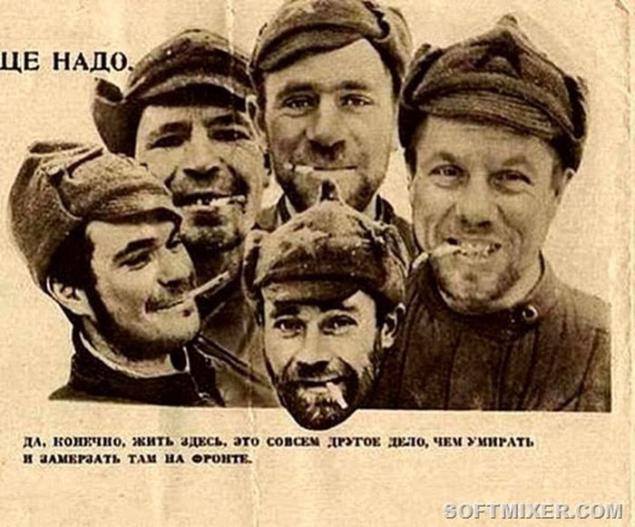
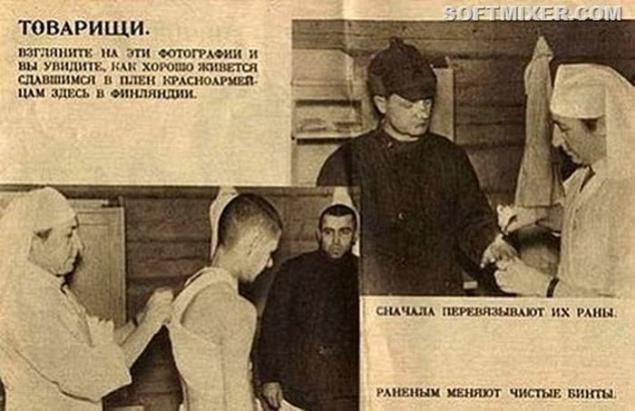
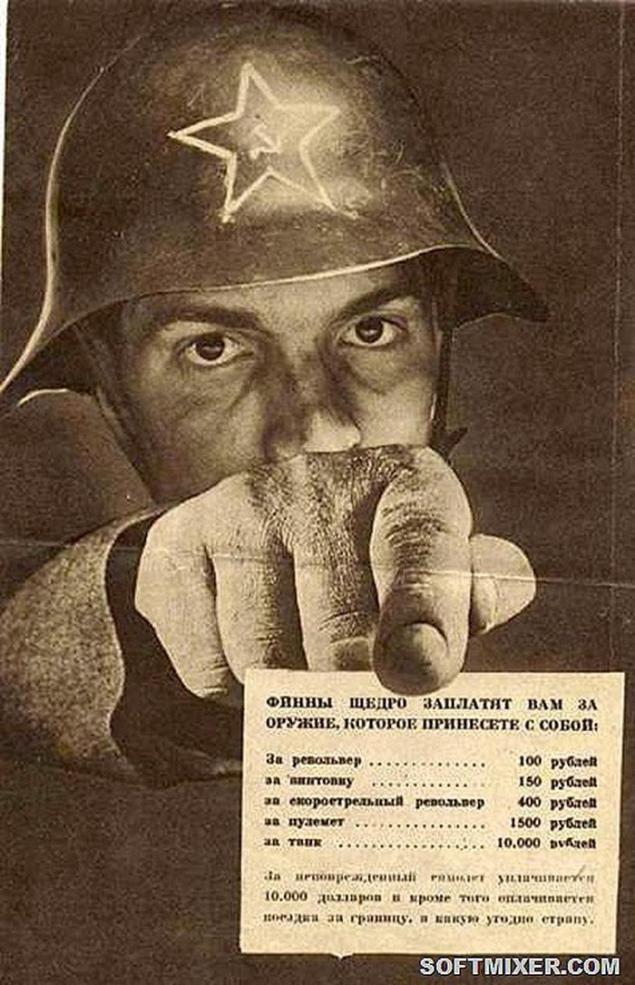
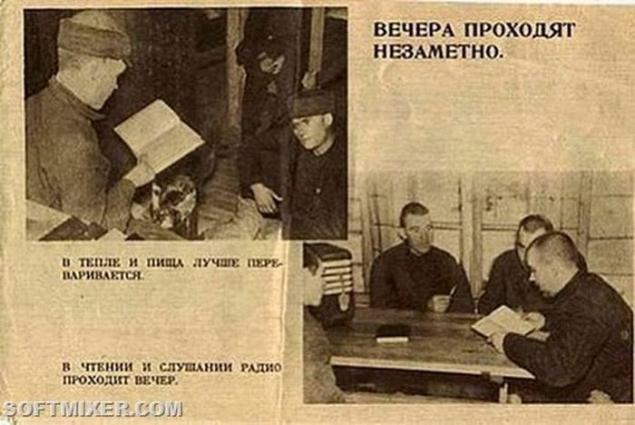
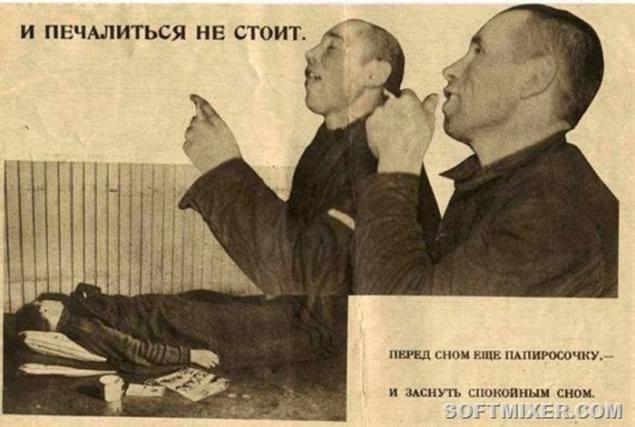

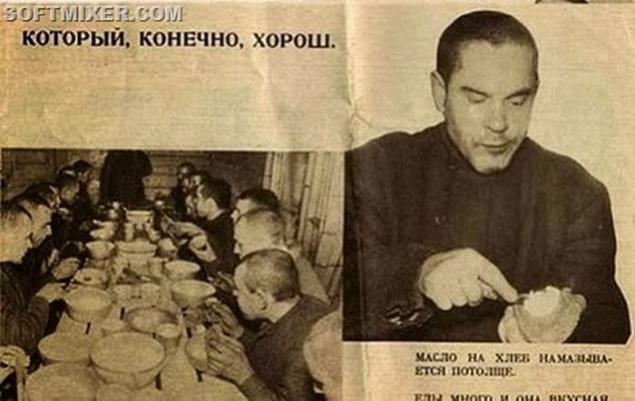
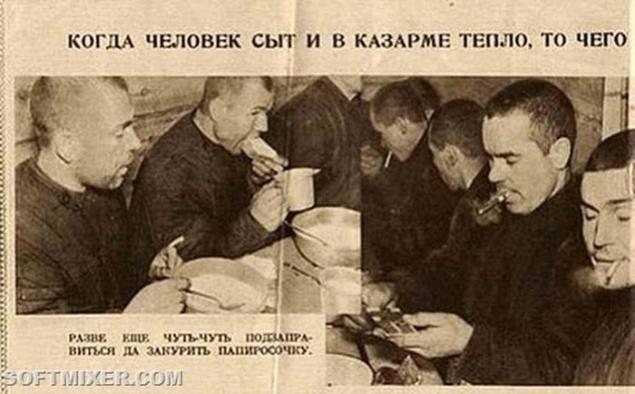

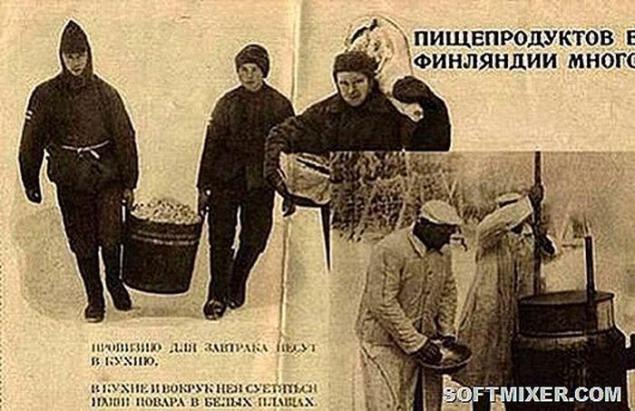
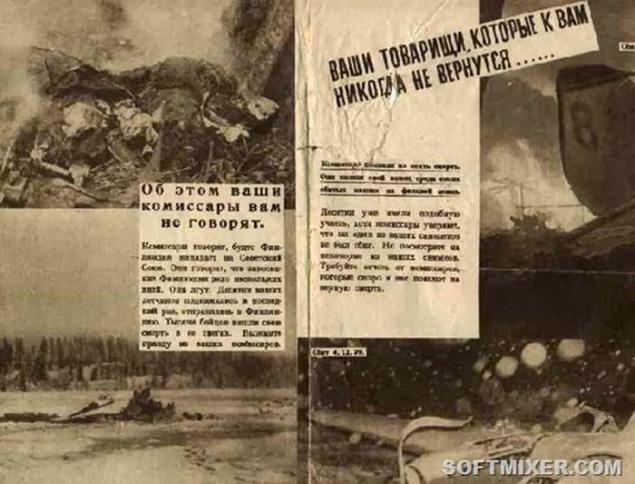
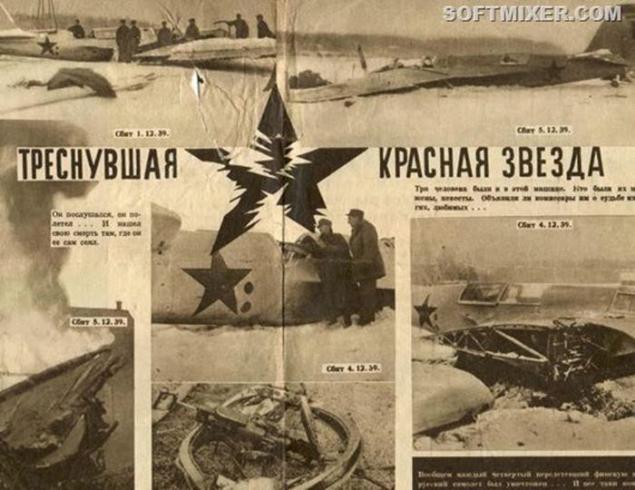
Source: ussrlife.blogspot.co.il

In Soviet textbooks assured us: the beginning of the armed conflict, "the Finnish military." November 26 near the village of Mainila there was shelling of the Soviet troops, who were at the Finnish border, in which four soldiers were killed and 10 wounded.
Finns have proposed the creation of a joint commission to investigate the incident, from which the Soviets refused and said it no longer considers itself bound by the Soviet-Finnish treaty of non-aggression. It was the shelling of a hoax?

"I have read the documents until recently classified, - says military historian Miroslav Morozov. - In the divisional war diary page with entries about shelling are much more recent origin.
Report to the division headquarters there, families of victims are not indicated in what hospital sent the wounded - it is unknown ... As you can see, while the Soviet leadership not to take care of credibility reason for going to war ».

Since the declaration of independence of Finland in December 1917, with the USSR constantly had territorial claims. But they are increasingly becoming the subject of negotiations. The situation changed in the late 30s, when it became clear that soon will begin the second world war. USSR demanded that the Finnish non-participation in the war against the Soviet Union, permits the construction of Soviet military bases on the Finnish territory. Finland hesitated and pulled time.

The situation worsened with the signing of the Molotov-Ribbentrop Pact, by which Finland belonged to the Soviet sphere of interest. The Soviet Union began to insist on their terms, while offering certain territorial concessions in Karelia. But the Finnish government rejected all the offers. Then, on Nov. 30, 1939 began the invasion of Soviet troops on the territory of Finland.

In January, hit frost to -30 degrees. Surrounded by Finnish soldiers were forbidden to leave the enemy heavy weapons and equipment. However, seeing the inevitability of the death of the division, Vinogradov gave the order to leave the environment.
Of the nearly 7,500 people came to their 1500 division commander, regimental commissar and chief of staff were shot. And it turned out in the same conditions as the 18th Infantry Division remained on the ground and completely destroyed the north of Lake Ladoga.

But the heaviest losses of Soviet troops suffered in the fighting on the main line - the Karelian Isthmus. It covers the 140-kilometer-long defensive Mannerheim Line on the main defensive belt consisted of 210 long-term and 546 tree-earth emplacements. To break through it and grab the city of Vyborg was only during the third assault, which began Feb. 11, 1940

The Finnish government, seeing no hope left, went into the negotiations and 12 March was the peace treaty. The fighting ended. Having a dubious victory over Finland, the Red Army began to prepare for war with the much larger predator - Nazi Germany. The preparation of the history has released 1 year, 3 months and 10 days.

As a result of the war with the Finnish side lost 26 thousand soldiers from the Soviet - 126 thousand. USSR was new territory and pushed the border from Leningrad. Finland, in the future, was on the side of Germany. And the Soviet Union was expelled them to the League of Nations.

Some facts from the history of the Soviet-Finnish War
1. Soviet-Finnish war of 1939/1940's was not the first armed conflict between the two countries. In 1918-1920, and again in 1921-1922 were the so-called first and second Russo-Finnish War, in which the Finnish authorities, who dreamed of a "Greater Finland", tried to seize the territory of East Karelia.
Themselves were a continuation of the war raging in Finland in 1918-1919 bloody civil war ended with the victory of Finnish "white" on the Finnish "Reds." As a result of the wars of the RSFSR retained control of the eastern Karelia, Finland gave Polar Pechenga, as well as the western part of the peninsula and most of the Fishermen Peninsula Middle.

2. At the end of the wars of the 1920s the relations between the USSR and Finland were not friendly, but did not reach the open confrontation. In 1932, the Soviet Union and Finland signed an agreement on non-aggression, which was later extended to 1945, but the fall of 1939, the Soviet Union severed unilaterally.
3. In 1938-1939 the Soviet government was secretly negotiating with the Finnish side of the exchange of territories. In the context of the impending World War, the Soviet Union intended to push the state border from Leningrad, as it is just 18 kilometers from the city. In return, Finland proposed the territory in Eastern Karelia, much larger in size. The negotiations, however, were unsuccessful.

4. The immediate reason for the war was the so-called "shelling of mainila": November 26, 1939 section of the border near the village of Mainila group of Soviet soldiers had fired artillery. It has been seven gunfire, leaving three privates were killed and one junior commander, injuring seven ordinary and two of the commanders.

Modern historians are still arguing about whether the shelling in Maynile provocation of the Soviet Union or not. Anyway, two days later, the Soviet Union denounced the non-aggression pact, November 30 began fighting against Finland.
5. December 1, 1939 the Soviet Union announced the establishment in the village Terijoki alternative "people's government" led by the Finnish Communist Otto Kuusinen. The next day, the Soviet Union signed a treaty of mutual assistance and friendship with the Government of Kuusinen, is recognized as the only legitimate authority in Finland.

At the same time there was a process of formation of the Karelian Finns and Finnish People's Army. However, by the end of January 1940 the position of the Soviet Union has been revised - the government Kuusinen remembered no more, and all talks were held with the authorities in Helsinki.

6. The main obstacle for the Soviet offensive was "Mannerheim Line" - named after the commander of the Finnish defense line and politics between the Gulf of Finland and Lake Ladoga, which consists of multi-level, equipped with heavy weapons concrete fortifications.
Initially did not have funds for the destruction of such a line of defense, Soviet troops suffered heavy losses during the many frontal attacks on strengthening.

7. Finland at the same time provide military assistance to both Nazi Germany and its opponents - England and France. But if Germany was limited unofficial military supplies, the Anglo-French forces considered plans for a military intervention against the Soviet Union. However, these plans have not been implemented because of fears that the Soviet Union in such a case may take part in the Second World War on the side of Nazi Germany.

8. By early March 1940, Soviet troops managed to break through the "Mannerheim Line" that posed a threat to the complete defeat of Finland. In these circumstances, and not waiting for the Anglo-French intervention against the Soviet Union, the Finnish government has gone to negotiate peace with the Soviet Union. The peace treaty was signed in Moscow on March 12, 1940, and the fighting ended March 13 capture of Vyborg by the Red Army.

9. In accordance with the Moscow Treaty, the Soviet-Finnish border was pushed from Leningrad from 18 to 150 km. According to many historians, this fact has largely helped the city avoid capture by the Nazis during World War II.

All in all territorial acquisitions of the USSR at the end of the Russo-Finnish War totaled 40 thousand sq.km. Data on the human cost of the parties to the conflict and to this day remains controversial: the Red Army lost killed and missing from 125 to 170 thousand people, the Finnish army - from 26 to 95 thousand people.

10. The well-known Soviet poet Alexander Tvardovsky in 1943 wrote a poem "Two lines", which became perhaps the most striking artistic reminder of Soviet-Finnish War:
From the notebook shabby books
Two lines of fighters kid,
What I was in the fortieth year
Killed in Finland on the ice.
Lying somehow clumsily
Childish little body.
Overcoat to ice cold pressed,
Far cap came off.
It seemed as if the boy was not lying,
And still ran ran
Yes, the ice held the floor for ...
Among the big war cruel,
Why - I'll never know,
I feel sorry for the fate of the distant,
As if dead, lonely,
As if that I lie,
The frozen, small, dead
In that war neznamenitoy,
Forgotten, a little lie.

Photos "neznamenitoy" War
Hero of the Soviet Union Lieutenant MI Sipovich captain Korovin on the captured Finnish reinforced-concrete pillbox.

Soviet soldiers inspect captured Supervisory cap Finnish bunker.

Soviet soldiers are preparing to conduct Maxim machine gun anti-aircraft fire.

Burning after the bombing of a house in Turku, Finland.

Soviet sentry near the Quad Soviet anti-aircraft machine gun mount on the base of the machine gun "Maxim».

Soviet soldiers dug Finnish border post near the frontier Mainila.

Soviet military breeders separate battalion of communication with connected dogs.

Soviet border guards inspect captured weapons Finnish.

Finnish soldier next to a Soviet fighter shot down I-15 bis.

Build soldiers and commanders of the 123rd Infantry Division on the march after fighting on the Karelian Isthmus.

Finnish soldiers in the trenches near Suomussalmi during the Winter War.

Red Army prisoners captured by the Finns in the winter 1940.

Finnish soldiers are trying to spread out in the forest, seeing the approach of Soviet aircraft.

Frozen Red Army 44th Infantry Division.

Frozen Red Army soldiers in the trenches of the 44th Infantry Division.

Soviet wounded man lying on the table for a cast made of improvised means.

Park "Three corners" in Helsinki with open slits dug to shelter the population in the event of an air raid.

Blood transfusions prior to surgery in a Soviet military hospital.

Finnish women at the factory sew winter camouflage coveralls /

Finnish soldier misses the broken Soviet tank column /

Finnish soldiers firing from a machine gun Lahti Saloranta-M-26 /

Residents of Leningrad welcome tank 20 Tank Brigade tanks T-28, returning from the Karelian Isthmus /

Finnish soldiers with a machine gun Lahti Saloranta-M-26 /

Finnish soldiers with a machine gun "Maxim" M / 32-33 in the forest.

Finnish anti-aircraft machine gun calculation "Maxim».

Finnish tanks "Vickers", lined near the station Perot.

Finnish soldiers in 152-mm cannon Kane.

Finnish civilians who fled their homes during the Winter War.

Broken Column Soviet 44th Division.

Soviet bombers SB-2 over Helsinki.

Three Finnish skiers on the march.

Two Soviet soldier with a machine gun "Maxim" in the woods on the Mannerheim Line.

The burning house in the Finnish city of Vaasa (Vaasa) after a raid by the Soviet Air Force.

View of the streets of Helsinki after a raid by the Soviet Air Force.

House in the center of Helsinki, damaged after the attack of Soviet aviation.

Finnish soldiers raise the frozen body of a Soviet officer.

Finnish soldier looks at changing the clothes Red Army prisoners.

Soviet prisoners captured by the Finns sitting on a box.

Red Army prisoners enter the house under guard of Finnish soldiers.

Finnish soldiers carry a wounded comrade on a dog sled.

Finnish nurses carry stretchers with the wounded at a field hospital tents.

Finnish medical stretchers loaded with the wounded in hospital bus production «AUTOKORI OY».

Finnish skiers with deer and drags to a halt during the retreat.

Finnish soldiers dismantled the captured Soviet military equipment.

Sandbags covering the windows at home on the street Sofiankatu in Helsinki.

T-28, the 20th Heavy Tank Brigade, before going on a combat operation.

Soviet tank T-28, lined on the Karelian Isthmus near the height of 65, 5.

Finnish tanker near the captured Soviet T-28.

Residents of Leningrad welcome tankers 20th Heavy Tank Brigade.

Soviet officers on a background of Vyborg Castle.

Finnish air defense soldiers looking at the sky through a rangefinder.

Finnish ski battalion with deer and drags.

Swedish volunteer in the position during the Russo-Finnish War.

Calculation of the Soviet 122 mm howitzer at the position during the Winter War.

The orderly on a motorcycle passes the message to the crew of the Soviet armored car BA-10.

The pilots Heroes of the Soviet Union - Ivan Pyatyhin, Alexander and Alexander Flying Kostylev.

Finnish propaganda times Sovetskaya-Finnish War
Promised a carefree life, surrendered to the Red Army prisoners, Finnish propaganda: bread and butter, cigars, vodka and dancing to the accordion. For the weapons brought with them generously paid, reservation, promised to pay: his revolver - $ 100 for the gun - 1,500 rubles, and for the gun as much - 10,000 rubles.













Source: ussrlife.blogspot.co.il











